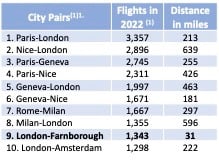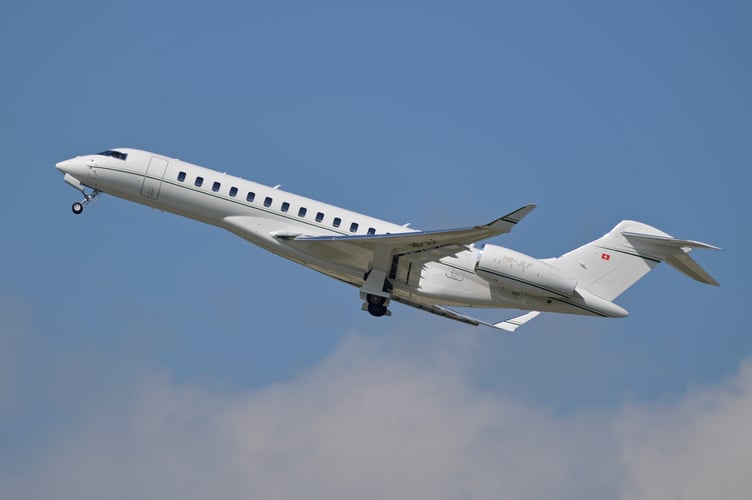Farnborough Airport claims the proposed expansion will offer significant benefits to the local area, but Farnham Residents, the political group that best represents the residents of Farnham, believes the negatives far outweigh any positives.
On a local level, the proposals will have a significant impact on noise levels, particularly at weekends, with plans to more than double weekend flights from 8,900 to 18,900.
The Civil Aviation Authority (CAA) is yet to confirm that impacts on the local community, such as noise, are within “acceptable tolerance limits”, yet the proposed expansion will see more flights at the weekend than previously across the whole week, and is now proposed to start at 7am!
The weekend is a time when residents will wish to be outside in their gardens or enjoying the many green spaces in Farnham and the surrounding villages. Do we really want our tranquillity broken by the roar of private planes serving the whims of a privileged few?
And, of course, on a global level we are facing a climate emergency. More flights by private planes, which produce between five and 14 times more greenhouse gas carbon dioxide than commercial planes per passenger, will only add to the problem.
It is true that Farnborough Airport is a major employer in the area, contributes to the wider local economy and creates career opportunities for local residents. The proposed expansion will create additional jobs and benefits for the wider economy, but at a significant cost to the quality of life in the surrounding area and at a major cost to the environment.
At a time when we are all being asked to reduce our carbon footprint, do we really want, or need, more private flights? In 2022, the UK topped the table for carbon dioxide emissions produced by private flights within European nations, with 501,077 tonnes of CO2 produced by the 90,256 jets that took off from UK runways. During this time, the route between Farnborough and London was the ninth most used in Europe, with 1,343 private jet flights. Since there is a perfectly good fast, direct train line between Farnborough and London and it is only 31 miles, these flights are an extravagant choice, not a necessity.

My view, and the view of the Farnham Residents Group, is that we do not need more private flights, but we do need to create greater economic opportunities in the local area.
We should be using our local, highly-skilled workforce to address climate change rather than make it worse and, given the history of the area, an investment in green energy from wind turbines seems an obvious choice.
We are now used to seeing horizontal wind turbines, but these tend to be only suitable for very specific areas and are often installed a long way from where the power is needed. The rapid development of new vertical wind technologies may offer a more appropriate opportunity as the naturally smaller scale vertical wind turbines, such as those installed in the Olympic Park in 2012, can be used in residential areas directly where the power is needed.
Many of the skills required are transferrable and there could be apprenticeships as well, with the added benefit of becoming the hub for a technology that could be rolled out and installed on buildings across the country and the world, creating even more jobs.
I urge all local residents to engage in the consultation process, ask the right questions, make your feelings known, and do the same when the formal planning application for the expansion of the airport is made to Rushmoor Borough Council. Share your views at farnboroughairport2040.com and/or sign the petition here.





Comments
This article has no comments yet. Be the first to leave a comment.